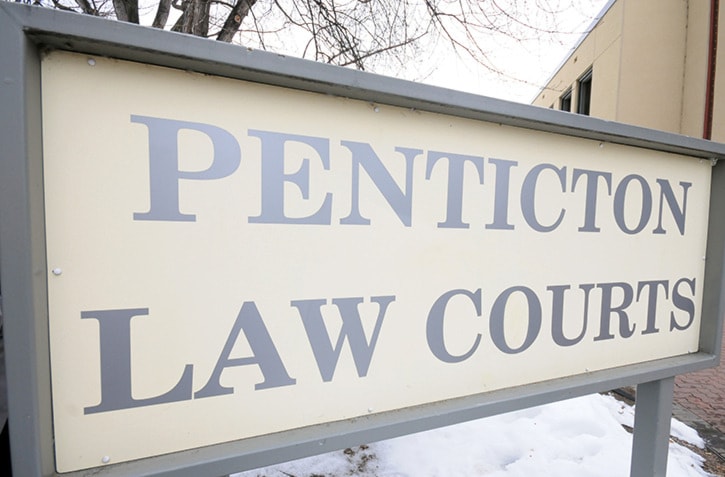An accused child pornographer in Penticton admitted to police that he took photos of young girls sleeping, saying it was not sexual but to get back at their mother.
The trial for a man who cannot be named due to a publication ban protecting the identities of the victims began on Tuesday in Penticton Provincial Court.
He is facing charges of possessing, making, distributing and accessing child pornography and voyeurism.
The accused quickly admitted to police in a recorded statement in 2012 that he took around 200 photos of the nine and four-year-old daughters of his ex-wife while they were sleeping, though he claimed he didn’t “get off” on the photos and was only doing it to hurt his former common-law spouse.
The man failed to explain the links to child pornography websites allegedly emailed from his phone to his own email account, though he told police he looked at the website at work and maintained he performed the acts to hurt his wife at the time.
“I knew she would find it,” the man said in the interview. “I wanted to hurt her.”
The girls were wearing clothes in the photos, however there are multiple close-up photos of the girls crotches.
The photos were allegedly found by the ex-spouse in the man’s email, she subsequently reported the man to police.
Defence counsel James Pennington argued on Wednesday that the key piece of evidence, the video of the man’s statement at the Penticton RCMP detachment in 2012 where he admits to taking the photos, was a “deliberate ploy to do an end run around the Charter.”
He argued that the interview with the accused conducted by Cst. Ryan Harris weeks after the allegations were brought to police three years ago was a form of entrapment, due to the fact that Harris never told the man that what he said in the interview could be used against him. Harris did tell the man that he was not under arrest, free to leave the interview at any time and free to consult a lawyer.
“(The accused) should have been told whatever you say to me in this interview can be used against you,” Pennington said. “In my submission that was a deliberate tactic on the part of Cst. Harris in order to avoid a messy situation of arrest, detention and then all the Charter remedies that flow from that.”
“The court should be concerned if that is going to be a deliberate tactic,” Pennington said.
Pennington submitted that the interview was not to hear the man’s side of the story as Cst. Harris suggested, but to obtain an admission of guilt.
Pennington also noted that there is no record of the phone call on Dec. 7, 2012 between Cst. Harris and the accused, when Harris asks the man to come in for the interview.
“When looking at all of the circumstances you need to take into consideration what was said in that telephone call,” Pennington said. “(The Crown) made good use of understatement when she said that Cst. Harris did not make great notes. The point of the matter is he made no notes.”
Cst. Paul Wrigglesworth, the officer who compiled a forensic report on the data from the cell phone and hard drive seized from the accused by police, took the stand Thursday.
In his report it was determined that some of the images taken from the iPhone had embedded data which could determine the time, date and place the photos were taken.
Only a few of the photos had this data and one was placed at Nov. 11, 2012 at 3:33 a.m. in an address in Penticton.
The trial is expected to continue on Friday with the cross examination of Wrigglesworth.
